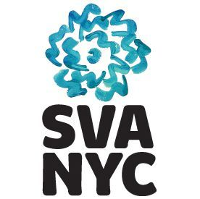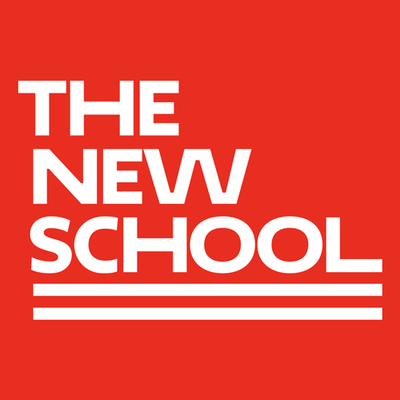The ASIFA-East Story
By Howard Beckerman.
The jewel of the New York ASIFA-East chapter is its animation festival. Since many animation festivals are held in alternate years, this might be the longest-running animation festival in the world. It appeals to professionals and novices alike – no preselection committee to eliminate films – and is casual enough for students and veteran animators to mingle, discuss and toast the subject they love best – animation.
The festival premiered in 1969, four years after ASIFA-East began as a chapter of the Association Internationale du’Film D’Animation when Pierre Barbin, then president of the Association, came to New York to announce ASIFA-East’s formation. In Europe, ASIFA served as a magnet for drawing individual animators together to share their work and experiences. There might have been fifteen animators in one city, forty in another or just one or two in certain places, but the expansion to North America where many animators worked in several cities, required a different approach. The solution was to create regional chapters, each unit with a 10 member minimum, and its activities strictly not-for-profit.
The result was ASIFA-East and ASIFA-West, which later became ASIFA-Hollywood and was followed in a few years by chapters in other cities scattered across the continent. Memory has faded for most of us about the very beginnings of ASIFA-East, but what I recall is that ASIFA President Barbin’s 1965 visit was celebrated with a large gathering at the Huntington Hartford Museum at New York’s Columbus Circle.
This narrow structure, an icon of the Modern Movement designed by architect Edward Durrell Stone which had opened only a year before, had at least one ample room where the local animators convened. I remember that John Hubley, former president of ASIFA, was there as was prominent film critic Stanley Kaufman. The gathering was noisy and, well, not surprising, animated. At some point, we were invited to the museum’s theater, where a handful of French independent black-and-white shorts were shown — none of which were animated. I’ve never figured that one out. What does linger in recollection about the evening was the clutch of animators and designers that grouped at the bar laughing and grousing about the lack of appreciation on the part of advertising agencies and the world in general, even as a new chapter championing worldwide animation was being shaped.
The preoccupation of animators in New York in the 1960s was TV commercials. Though the midtown-based Paramount Cartoons was still churning out shorts for theaters and Terrytoons, just north of the city in New Rochelle, was still bustling with cartoon productions for kids’ television, the real thrust of the forty or so small studios in the area was to satisfy the demands of Madison Avenue. A snapshot of that period in animation history would show that former Disney, Lantz, Warner Bros., MGM, Fleischer and Terrytoons staffers were applying their skills to the selling of cars, soaps and beers.
Independent animators were rare at that time because of a lack of outlets. The existing film festivals that dotted the globe were predominantly live-action events that gave an occasional nod toward frame-by-frame productions. The Annecy Festival, begun in 1960, was the lone exception. Yet, with the release of “Yellow Submarine” in 1968, independent animation took an inspired turn. A generation of young animators were suddenly and impetuously motivated to do their own thing, emulating the film’s graphic brilliance as well as the Beatles’ lighthearted antics. By the 1970s, this new breed fed the growing attendance at film schools and contributed their efforts to emerging festivals devoted strictly to animation.
The animators in New York worked under the aegis of the Screen Cartoonists Guild whose business agent, Pepe Ruiz, saw that accepting ASIFA would be a welcome experience for local animators. The first official mailing address for the new chapter was the union office at 15 West 47th Street in the heart of Manhattan’s Diamond District. Ruiz, with the blessing of the union membership, sent Optical House director Dick Rauh and designer Hal Silvermintz as delegates to Annecy in 1965.
In over 50 years of existence, there have been only six ASIFA-East presidents: Shamus Culhane, Dick Rauh, ( who also served on the international board of directors), Linda Simensky, Katie Cropper Klein, and the present holder of that office, Tristian Goik. Culhane in his initial directive, dated June 3, 1966, informed the animation community that, “At long last, a much-needed branch of the International Animation organization ASIFA is being formed here. It is to be called ASIFA-EAST.” He hopefully suggests that it “would provide a center for information on international film festivals, as well as organize such festivals here in New York.” As always, in the fluctuating New York commercial field, it was hoped ASIFA would generate business or, as Culhane states, “Ultimately it will open up animation here, and allow it to share in the renaissance and increased interest that film is enjoying now.”
The first ASIFA-East screening took place on the evening of the following June 20th. In the years since monthly screenings and lectures have been held in varied locations, and if projection facilities were unavailable we would pack and shlep our Bell and Howell projectors along with our enthusiasm to such diverse locations as commercial screening rooms, hotel conference units, the back rooms of Schraffts’ restaurants, The Society of Illustrators, the cozy theater seats at the Museum of Modern Art or the Donnell Branch of the New York Public Library. It was at schools and colleges where we found the most sympathetic acceptance. Included among these have been: Phoenix School of Design, New York University, New School University, Parsons School of Design and School of Visual Arts.
A circle of informal diehard ASIFA-East members-the board-selects the monthly screenings. All of the chapter’s 400 diverse members are welcome at these joking and punning sessions where ideas are tossed about and the newsletter is stapled and stamped for mailing. At a similar circle in late1968, animator Pete Dekas suggested that we create a film festival, This idea satisfied the group’s search for a signature event to distinguish ASIFA-East from the other chapters.
The immediate concern was whether there would be any response to the invitation to submit films. Well, not to worry, reels of 16millimeter film began arriving through the mails. From the very beginning it had been decided that all ASIFA-East members in good standing would be eligible to vote on the entries, but one evening, the anxious board plucked two short films at random from the growing stack and screened them to test the caliber of the submissions. The films were funny and interesting and, miracle of miracles, the festival was on its way. Through the years the event proved to be an excellent outlet for students and independents to exhibit their work without intimidation.
The first film to win Best in Show was a 30 second Sparklettes desert commercial by the studio Stars & Stripes Productions Forever Inc. Tissa David recalls that telegrams were sent to all the winners requesting their presence on award night. A touch of grandeur that was never repeated. Winning entries for which this was their first exposure, often collected honors at other events. At least six entries found their way to Academy Award nominations, two of which received Oscars for best animated short subject: “Frank Film” by Frank Mouris in 1973 and “Sundae in New York” by Jimmy Picker in 1983.
In the early years, the winning films or videos were mostly commercials, then there were years when films for children dominated. With the increased demand for animated shows for cable, offbeat, edgy, and nervy shorts took prizes. There were also the clever videos that became pilots for TV series. Alongside these more obvious examples, there have always been very personal animated films that revealed unique visions and approaches. In the end, we owe thanks to good old Pete Dekas, who was on the money when he suggested the creation of a film festival. Ironically, many years back, a winning film of his was shown accidentally upside down and when rewound, was projected backwards.
As past ASIFA-East president David Levy remarks, “The festival has been our cornerstone event. It’s been a constant. In this day and age of home video, digital cable, and the internet, ASIFA-East brings live bodies together through the festival as well as at monthly, one-of-a kind screenings, lectures and events. Not only are we a device by which students can plug into the industry, we serve as the glue of the community itself. Friendships, partnerships, and businesses have been sparked from the ASIFA-East connection.”
It’s safe to say that ASIFA-East, closing in on 50 casual, laid back years in operation and over 40 years of friendly sponsorship of its popular film festival, will go on forever.
Howard Beckerman, animator, and teacher has been with ASIFA-East since its inception. He was a vice-president of ASIFA International and is author of the well received Animation The Whole Story. In writing this article he would like to thank Dick Rauh, Vinnie Caferelli and Tissa David for sharing their early memories of ASIFA-East and Linda Simensky, Michael Sporn and David Levy for their assistance.





